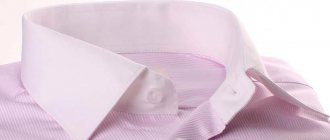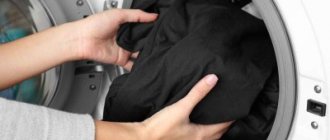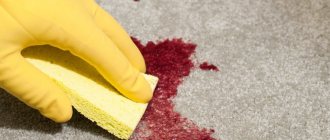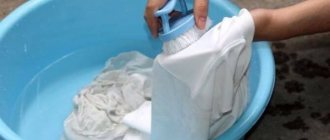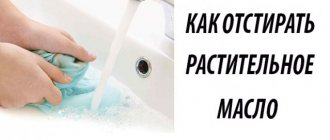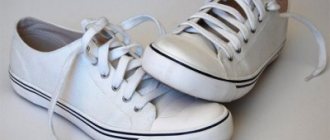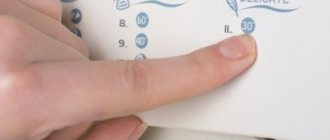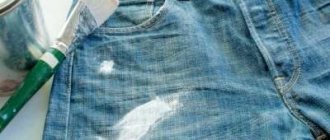Features of tea stains
Why are tea stains not always removed? It's all due to phenolic compounds - tannins. They give the drink a rich color and are fixed in the fibers of clothing. Even light-colored green tea leaves stubborn stains. It contains even more tannins than black.
Interesting fact: Tea leaves are used as a dye.
Still waiting for the stain to dry? Run to wash! But first, let's find out which methods are suitable for different fabrics and colors.
Cleaning Colored Clothes
Removing stains from colored fabric has its own challenges. Many chemical products can cause dullness and decrease in color intensity. Therefore, such things need to be washed with caution. What means are used in such cases:
- Borax . The product is sold in a pharmacy. It is applied in its pure form to the stain, left for a couple of minutes, and then the item is placed in the washing machine. For stubborn stains, add a few drops of lemon juice to the solution.
- Vinegar.
To remove stains, use 9% vinegar. To do this, moisten a cotton swab in a pure vinegar solution, apply the mixture to the affected area of the tissue and leave for 3 minutes. Then the item is washed with universal washing powder.
If you cannot remove tea stains on your own, it is better to take the damaged clothes to the dry cleaner.
Tea stains on various fabrics
Methods for removing stains on different fabrics will differ, as will the washing itself. Do not rush to remove the stain using an inappropriate method, so as not to ruin the item altogether.
Delicate fabrics (silk, wool)
Here we will do without boiling water, contrast rinsing, aggressive washing and chlorine-containing bleaches. Only mild impact: glycerin, lactic acid, borax, lemon juice, soap or a gentle stain remover.
Tip Test the product on an inconspicuous area of clothing. Unfortunately, we spill tea in the most visible place.
Colored fabrics
Contraindications include stain removers for white. There are special industrial cleaners for non-ferrous materials with an oxygen composition. Among the folk methods for colored materials, borax, glycerin, salt, and soda are suitable.
White fabric
There are more washing methods for whites than for colours. The main problem is that the tea stain is more noticeable on white. Sometimes several whitening procedures are required.
Use bleaches, ammonia, special soap, glycerin, hydrogen peroxide.
Denim clothes
Oxygen stain removers, vinegar, citric acid, and ordinary laundry soap work well on denim clothes.
Items that cannot be washed
The dry method is used to clean paper products, as well as carpets and upholstered furniture (the areas on them can be moistened with a stain remover).
Household chemicals
Let's start with industrial products. If you have household chemicals on hand, then in most cases you won’t have to worry about the result. Just remember to read the instructions.
Bleach
Only for white - as the name suggests. Give preference to oxygen compounds: they do not emit a pungent odor, unlike chlorine-containing ones, and are gentle on the structure of the fabric.
Soak white T-shirts according to instructions. Some bleaches, such as Persol, require boiling or soaking in very hot water. Make sure the fabric fibers allow this method.
Anti-stain soap "Antipyatin"
This inexpensive but effective soap is similar to laundry soap. It is suitable for white and colored linen, including children's and delicates, does not destroy the structure of the fabric and enhances the effect of the powder. Used to remove stains from tea, coffee, fruit and berry juices, and wine.
Advice Alternative options are 72% laundry soap or “Eared Nanny” baby soap with a whitening effect.
Washing powder
Try spot washing your clothes: apply a few granules of washing powder to the stain and moisten with water. Rub the paste a little into the fibers, leave for a while, then rinse.
If the tea was weak, sometimes an ordinary machine wash with powder without soaking will be enough.
Stain remover
Products for white and colored fabrics. When purchasing, pay attention to the “for color” icon. Stain removers are produced by Vanish, Amway, Synergetic, etc.
Spray, pencil
These types of bleach are used for dry cleaning. Convenient to use, but more expensive. Examples: Dr.Beckmann, Cotico, Udalix, Paterra.
Bleaching
The use of “Belizna” and other chlorine-containing bleaches is an extreme case. Such products have lost their relevance, as they thin the fibers of clothing, spoil the color and structure, and also have a toxic effect on humans during use.
Chlorine bleach is effective and can be used on all-natural cotton or linen - only these fabrics will withstand aggressive influences.
General recommendations
Regardless of the type of fabric and intensity of soiling, general washing tips should be used:
- To prevent tea from spreading over the entire surface of the fabric, you need to blot it with a dry napkin or towel.
- If a drink has been spilled on a colored or silk item, it is first recommended to look at the information on the labels about whether the particular item can be cleaned and washed in a machine or not.
- Before automatic washing, the item should be soaked with a small amount of detergent, then rinsed in clean water and washed in a washing machine. You can not soak the entire thing, but only the contaminated part.
- To remove stains, special concentrated products are used, and in the machine they are washed with ordinary powders of low or medium concentration. This is necessary in order not to harm the fabric.
If the dirty item is classified as delicate clothing, then it would be more advisable to take it to the dry cleaner or use traditional cleaning methods, which are safer for the fabric.
Traditional methods for removing tea stains
When you need to act urgently, but there are no household chemicals at hand, or the product is not suitable for the fabric or did not live up to your expectations, then go to traditional methods. Many of them are quite effective for fresh stains, while some will get rid of old, stubborn tea stains.
Salt
Salt is a quick-response remedy:
- Blot your blouse with a dry cloth to remove as much tea as possible.
- Sprinkle the dried area with salt granules. The substance will continue to absorb moisture.
- Shake off the salt and repeat the procedure if necessary.
- Use the same method to remove grease stains.
Glycerol
Glycerin enhances the effect of cleaning components and even works on old stains. Use warm for greater effectiveness. Apply with a cotton pad and leave on for 20-30 minutes.
How to combine glycerin salt: Simply mix the two products into a paste and apply to a cloth.
Important: After using glycerin, you will have to wash the entire item.
Baking soda
Works like salt: sprinkle a little powder on the tea stain or dissolve baking soda in warm/hot water and soak the item for a couple of hours.
Borax
A 10% borax solution is an effective remedy that will not spoil the natural color of the item, whether it is white or colored. Apply a little borax with a cotton pad, leave for 15-20 minutes, rinse.
Tip When removing a tea stain, do not smear it, but clean it from the edge to the center.
Lactic acid
A solution of lactic acid with water (1:1) works well to remove fresh tea stains from light-colored fabrics, including delicate silk. It is used in the same way as borax or peroxide, it acts similarly.
Lemon acid
Weak acids attack tannins, quickly destroying the dye. Among such products is citric acid in granules; a bag of this product costs about 30 rubles.
Proceed in the same way as with washing powder:
- Apply the granules to the stain.
- Drop a little water, mix everything into a paste and leave for a few minutes.
- Remove the granules and dry the item.
You can soak with citric acid before washing if the stains are extensive and you are at home.
Lemon juice
This natural product has a mild effect. Just squeeze out some of the sour juice and apply it to the tea stain.
Ammonia
How to remove tea stains with ammonia:
- Dilute 0.5 tsp. ammonia in 0.5 liters of water.
- Apply the solution to the stain using a sponge or cotton swab.
- After 10-20 minutes, wash in warm water with powder.
Hydrogen peroxide
Essentially, hydrogen peroxide is the simplest oxygen bleach. Just drop a little onto a tea stain and the paint will dissolve before your eyes. In rare cases, you will have to wait about an hour.
Peroxide was popular among housewives before industrial laundry detergents filled the market.
Vinegar
Another acidic product for dissolving tea on fabric, suitable for a quick response when it is not possible to immediately wash the item. Apply vinegar to the stain and dry with tissues.
Contrast rinses
If the fabric is susceptible to any type of bleaching, try rinsing the stain several times, alternating cold and hot water.
Rust removal
When washed, rust stains spread even further through the fibers. Contaminants must be removed in advance. To remove rust, acids are used - oxalic, citric.
Wedge of lime or lemon
Citrus slices are good at removing fresh traces of rust. Cut a piece from a lemon or lime, wrap it in gauze, apply it to the stain and press it with a hot iron. If necessary, cut off a new slice and repeat the processing.
Lemon acid
In the absence of lemons, use citric acid. Make a solution - 20 grams per 100 milliliters of water. Bring the solution to a boil, cool slightly, and lower the stained area for 5-8 minutes.
Bonus: How to Clean Carpets and Furniture
Cleaning large items is impossible by washing or soaking, but applying a solution of the product to stains is quite possible! Apply the stain remover of your choice, wait until it dries and remove the residue with a vacuum cleaner or a cloth dampened with clean water. Also, sprays and pencils for local cleaning are always available in stores.
If you get down to business in a timely manner and wisely, the result of removing tea stains will not disappoint. Do not underestimate the value of instructions for household chemicals and the power of folk methods. Everything will work out!
Special properties of green and black tea
Even though tea is a common food item for most people around the world, it has one secret. Tea leaves contain special tannins - tannins, without which tea would have neither aroma nor its inherent astringency. They allow the stain to settle firmly on the clothing, and it is because of them that tea stains are so difficult to remove.
Tannins are found in both green and black tea, the only difference is in the amount of tannins. Therefore, we have to look for effective methods for removing both fresh and old tea stains.
